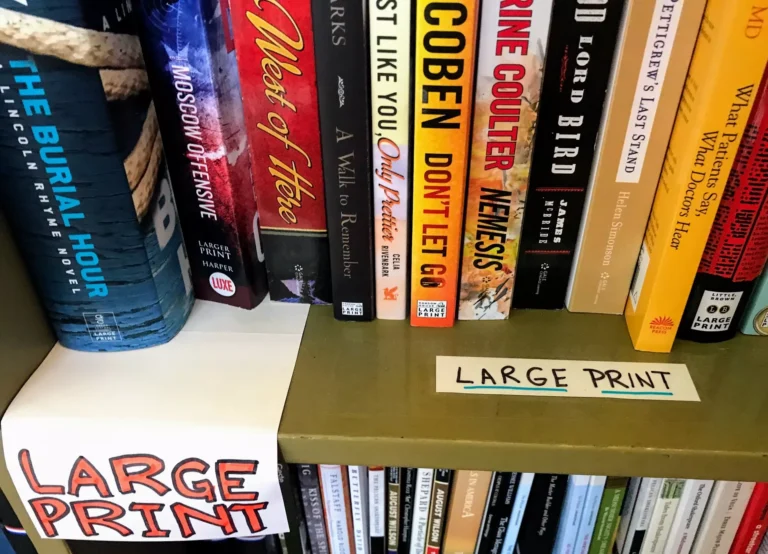
Large print books are becoming increasingly popular due to their accessibility and ease of use. These books, designed with larger font sizes, cater to a wide audience, including the visually impaired and those who find regular print books challenging to read. However, a common question arises: do large print books take longer to read? In this article, we will delve deep into the intricacies of large print books and uncover whether their format impacts reading time.
What Are Large Print Books?
Large print books are editions of texts that use significantly larger font sizes, typically ranging from 16 to 18 points, compared to the standard 10 to 12 points in regular print. These books are part of a growing large print collection available from publishers like Thorndike Press, which specializes in making literature more accessible.
Such books are not limited to novels; they include a wide range of genres, such as biographies, self-help titles, and even academic texts. Many titles available in large print aim to ensure that everyone, regardless of their visual abilities, can enjoy reading.
Why Are Large Print Books Easier to Read?
The benefits of large print are undeniable. Larger fonts reduce eye strain and enhance readability, especially for those with age-related vision issues or conditions like macular degeneration. The increased spacing between lines and letters in large print books makes it easier for readers to distinguish words and follow sentences. This streamlined experience often leads to fewer mistakes and less fatigue while reading.
Do Large Print Books Take Longer to Read?
The answer depends on various factors, including the reader’s age, vision, and familiarity with the content. Below, we break down the factors that might influence reading speed:
1. Font Sizes and Layout
Large print books have fewer words per page due to increased font sizes and spacing. As a result, these books tend to have more pages compared to regular print editions of the same text. While the content remains identical, turning more pages may create the impression of slower reading progress.
2. Reader’s Familiarity
For readers accustomed to regular print, the transition to large print might initially feel slower. However, readers who struggle with small fonts often find large print significantly faster to navigate because they no longer have to strain their eyes.
3. Visual Impairments
For individuals with visual impairments, the ability to read without assistance often outweighs the perceived reading speed. Large print allows these readers to maintain their independence, making the process smoother and more enjoyable.
4. Psychological Perception
The larger number of pages in large print books can psychologically affect readers. Some may feel they are taking longer to finish a book simply because they see more pages, even though their actual reading speed remains unchanged.
Who Benefits Most from Large Print Books?
Large print books are tailored to meet the needs of various groups, including:
- Visually Impaired Individuals: People with low vision often find it easier to read large print books, as the format caters to their needs without requiring additional devices like magnifiers.
- Older Adults: Age-related vision decline makes small fonts challenging. Large print books are an excellent solution for this demographic.
- Children Learning to Read: Larger fonts help children focus on individual letters and words, improving comprehension and fluency.
- Anyone Seeking Comfort: Even those with no vision issues might prefer large print books for the reduced eye strain during prolonged reading sessions.